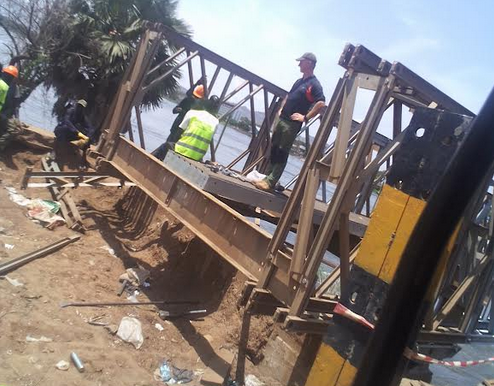As one lane of the Juba Bridge undergoes repair work for 45 days, residents living in the Gumbo-Sherikhat area east of the capital city have decried resultant exorbitant transport costs if one has to commute to the city.
The South Sudan government began rehabilitation works on 2 October after closing one lane of the Juba Bridge for 45 days.
Morbe Marcelino, a resident of the Gumbo suburb says commuting to and from her residence has become expensive and time-consuming.
"This bridge has really caused a lot of problems to many people crossing from Juba to Gumbo-Sherikhat and from Gumbo-Sherikhat to Juba Town,” Morbe lamented. “It has become very expensive, it has to cost me going from Gumbo to Juba and again Juba to Gumbo. You have to come down to get to the other side and sometimes you get no transport from the other side.”
He adds: “It has increased the cost of transportation because the fares are very high and it is time-consuming for one to get to their place of work.”
Another Gumbo resident, Anania Ohuru, says crossing the Juba Bridge is always frustrating.
"This constant repair of the bridge has been such a nuisance especially to those of us who are living on the Eastern side of the River Nile. I am one guy who really has a level of frustration when crossing the bridge," Ohuru complains.
He says he stopped going to Juba City due to the challenges involved in crossing the bridge and because he has nothing serious to do there.
"I have stopped going to town on daily basis partly because currently I am not working or engaged, this is because when you reach the bridge it always takes time, you may board a bus but it will take you 1 or 2 hours to cross. So you wait the turn for the cars to cross and with the current heat in Juba, it is really a discomfort," he added.
Most Juba residents say the bridge may suffer collapse if more bridges linking the city to the Eastern side of the Nile are not constructed.
Heavy goods transporters from neighboring Uganda and Kenya also complain that the closure and rehabilitation of one lane of the bridge are inconveniencing the delivery of goods and services to the capital Juba.
Mustapha Mohamed says nowadays he spends several unplanned nights in South Sudan due to delays occasioned by the repairs on the bridge.
"We find it difficult to deliver our supplies to Juba on time due to the delays at the bridge. They (army) in Aru Junction normally release us in bits but when we come to Juba now, we find the problem of the bridge," he said.
South Sudan's government finished the second repair work on the inbound lane in April 2020 after an initial general repair in 2008.
The bridge is a lifeline to thousands of South Sudanese living both in the Capital Juba and other parts of the country as most imports come to the country through it.
The government in Juba has not revealed the cost of the latest repairs but in 2020 the rehabilitation of the inbound lane was done at a cost of USD 4 million.
The Juba Bridge was built by a Dutch construction company, De Groot International, under a United Nations program between 1972 and 1974 to connect Juba Town to the Eastern bank of the River Nile.
The Juba Bridge is the shortest line that connects Juba to several East African countries including South Sudan's Eastern Equatoria and Jonglei states.




